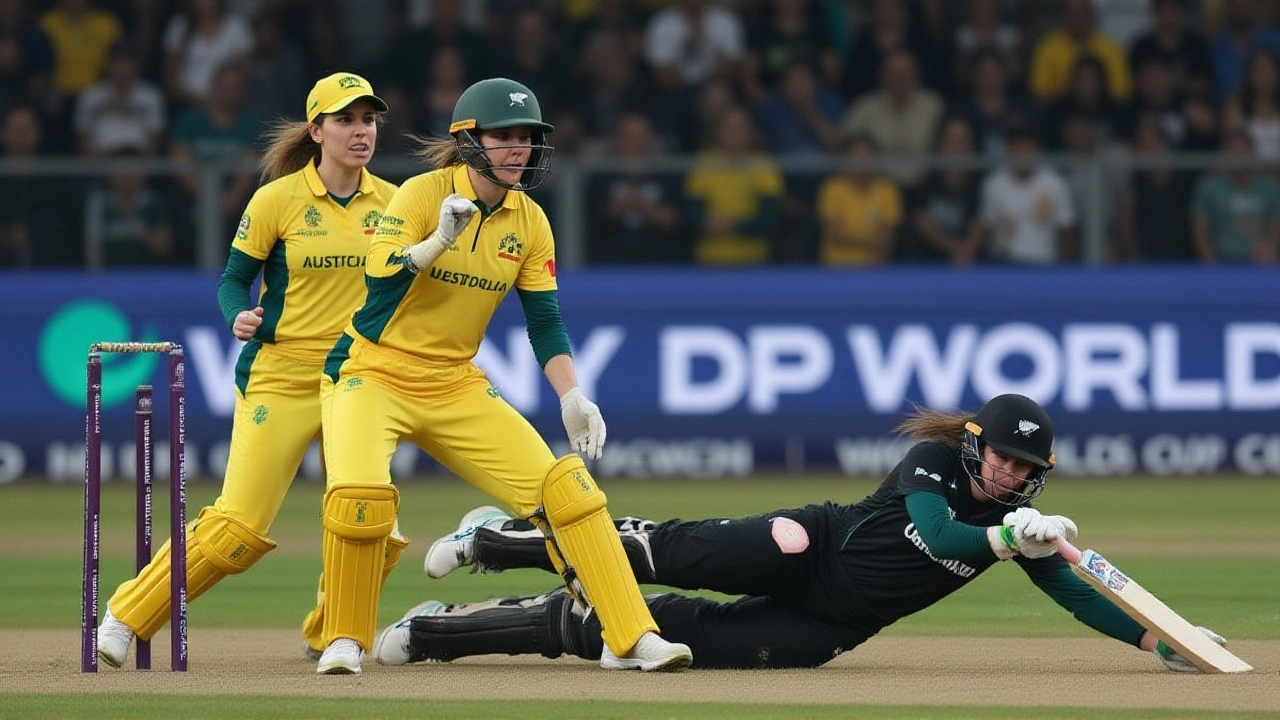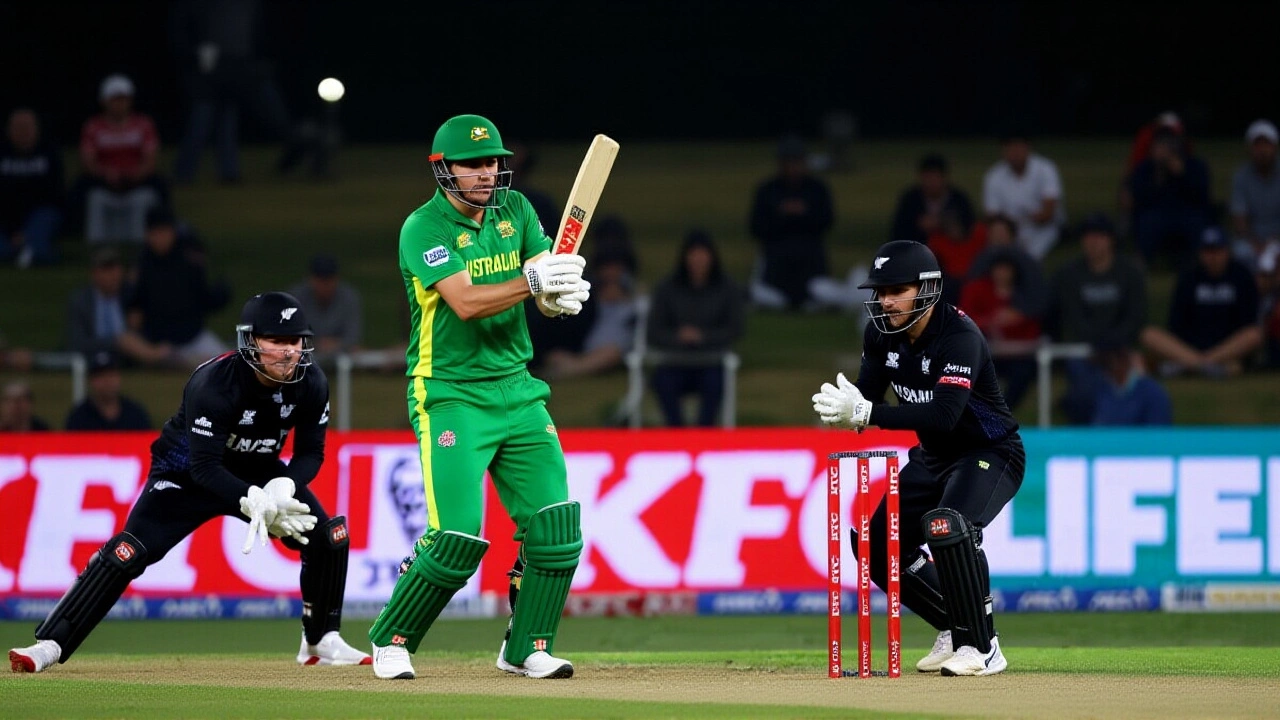When David Warner, Australian captain, walked onto the pitch at Bay Oval on Friday, October 3, 2025, the stakes felt as high as a summer barbecue on a windy day. The second Australia vs New Zealand T20I of the Australia tour of New Zealand T20 Series 2025New Zealand was more than just a game – it was a chance for both sides to seize momentum in a rivalry that stretches back more than a century. Kick‑off came at 11:45 am Indian Standard Time (6:15 am GMT), a slot chosen to catch cricket‑mad viewers from Mumbai to Melbourne, and the atmosphere was electric from the first ball.
Series Context
The tour, organized jointly by Cricket Australia and New Zealand Cricket, began with a tightly contested opener in Wellington, where New Zealand edged out Australia by three runs. That narrow margin set the tone for a series that promises to be a swing‑the‑bat battle, especially given both teams are gearing up for the 2026 ICC T20 World Cup.
Historically, Australia holds a 40‑year‑old lead in T20 head‑to‑head meetings, but the Kiwis have closed that gap in the last decade, winning 8 of the last 15 encounters. The second match was therefore a litmus test: could the Aussies re‑assert dominance, or would New Zealand continue their resurgence?
Match Day Details
The coastal breeze at Bay Oval added a tactical twist. The pitch, known for its low‑bounce seam-friendly surface, rewarded disciplined bowling early on. Australia won the toss, and Warner elected to bowl, hoping to exploit the morning damp.
- Opening partnership: New Zealand’s openers, Martin Guptill and Dean Jones, put together a brisk 45‑run stand in 5.2 overs.
- Key wicket: Australian pacer Pat Cummins (who took 2/19) dismissed Guptill with a well‑timed yorker that swung away from the right‑hander.
- Middle‑order surge: Kane Williamson (44 off 29) and Glenn Phillips (31 off 18) propelled New Zealand to 158/5 after 18 overs.
Chasing 159, Australia’s top order stumbled, losing both openers—Aaron Finch (2) and Mitchell Marsh (7)—in the first three overs. A crucial 48‑run partnership between Steven Smith (23) and Warner (28) steadied the ship, but New Zealand’s death overs were relentless. Nathan Lyon’s slower ball caught Warner in front, and a brilliant catch by Tom Latham at deep mid‑wicket sent a ripple through the Aussie camp.
In the end, Australia fell short by 12 runs, posting 146/7. The final over was a nail‑biter: New Zealand needed 12 off 6 balls, and a boundary off the third ball sealed the win.
Player Performances
Warner’s all‑round effort—scoring 28 and taking 1/22—earned him the Player of the Match award. His post‑match quote summed up the mood: “We fought hard, but the conditions and a brilliant New Zealand bowling unit made it tough. We’ll bounce back in the next game.”
Kane Williamson, the seasoned New Zealand skipper, praised his side’s composure: “Our bowlers executed the plan perfectly, and the middle order kept the scoreboard ticking. The series is still open, and we’ll look to finish strong.”
Statistically, the match featured five sixes, twelve fours, and an impressive 8 wickets falling inside the powerplay across both innings—a clear indicator of aggressive intent.
Reactions and Analysis
Critics on ESPN.com.au highlighted Australia’s failure to adapt quickly to the seam‑friendly conditions. “Warner’s decision to bowl first was bold, but the early movement favored the Kiwis,” noted cricket analyst Sunil Gavaskar (retired). “A more balanced approach, perhaps holding a spinner for the middle overs, could have turned the tide.”
New Zealand’s coaching staff, led by head coach Gary Stead, emphasized the importance of field placements. “We set the ring early, cutting off easy singles and forcing errors. That pressure paid off in the death overs,” Stead said during the post‑match press conference.
Looking Ahead
The series shifts back to Sydney for the third T20I on October 7, 2025, where Australia will enjoy home advantage. Both teams will likely tweak their line‑ups: Australia may consider bringing in left‑arm pacer Adam Zampa, while New Zealand could promote spinner Ish Sodhi to strengthen the middle overs.
With the ICC T20 World Cup only a few months away, every win carries weight in the rankings. A victorious series could boost Australia’s confidence ahead of the World Cup, whereas a New Zealand triumph would cement their status as dark horse contenders.
Background on Bay Oval
Situated in the Bay of Plenty region on New Zealand’s North Island, Bay Oval first hosted an ODI in 2014 and quickly became a favored venue for its panoramic ocean view and well‑maintained pitch. The ground’s capacity of 10,000 is modest, but its intimate atmosphere often favors technically sound bowlers.
Recent upgrades, including a newly installed drainage system, ensure matches can proceed even after heavy rain—a frequent challenge in coastal New Zealand summer.

Frequently Asked Questions
How does this result affect Australia’s World Cup chances?
Losing the second match drops Australia to a 1‑1 series tie, meaning they can no longer afford another loss if they want to retain home advantage for the final T20. The defeat highlights a need to adjust to seam-friendly pitches, a factor that could influence squad selection for the upcoming World Cup in the West Indies.
Who were the standout performers for New Zealand?
Kane Williamson’s brisk 44 off 29 and Nathan Lyon’s death‑over spell (3/12) were crucial. Their combined effort anchored the chase and clinched the win, earning them praise from coach Gary Stead.
What made Bay Oval a challenging venue?
The early‑morning moisture and coastal breeze created lateral movement, especially for fast bowlers. The pitch’s low bounce also forced batsmen to rely on timing rather than sheer power, complicating scoring during the powerplay.
Will there be changes to the Australian squad for the next match?
Cricket Australia’s selectors are expected to bring in left‑arm fast bowler Adam Zampa and consider a specialist death‑over bowler to counter New Zealand’s middle‑order firepower. The exact lineup will be announced after the team’s training session on Saturday.

